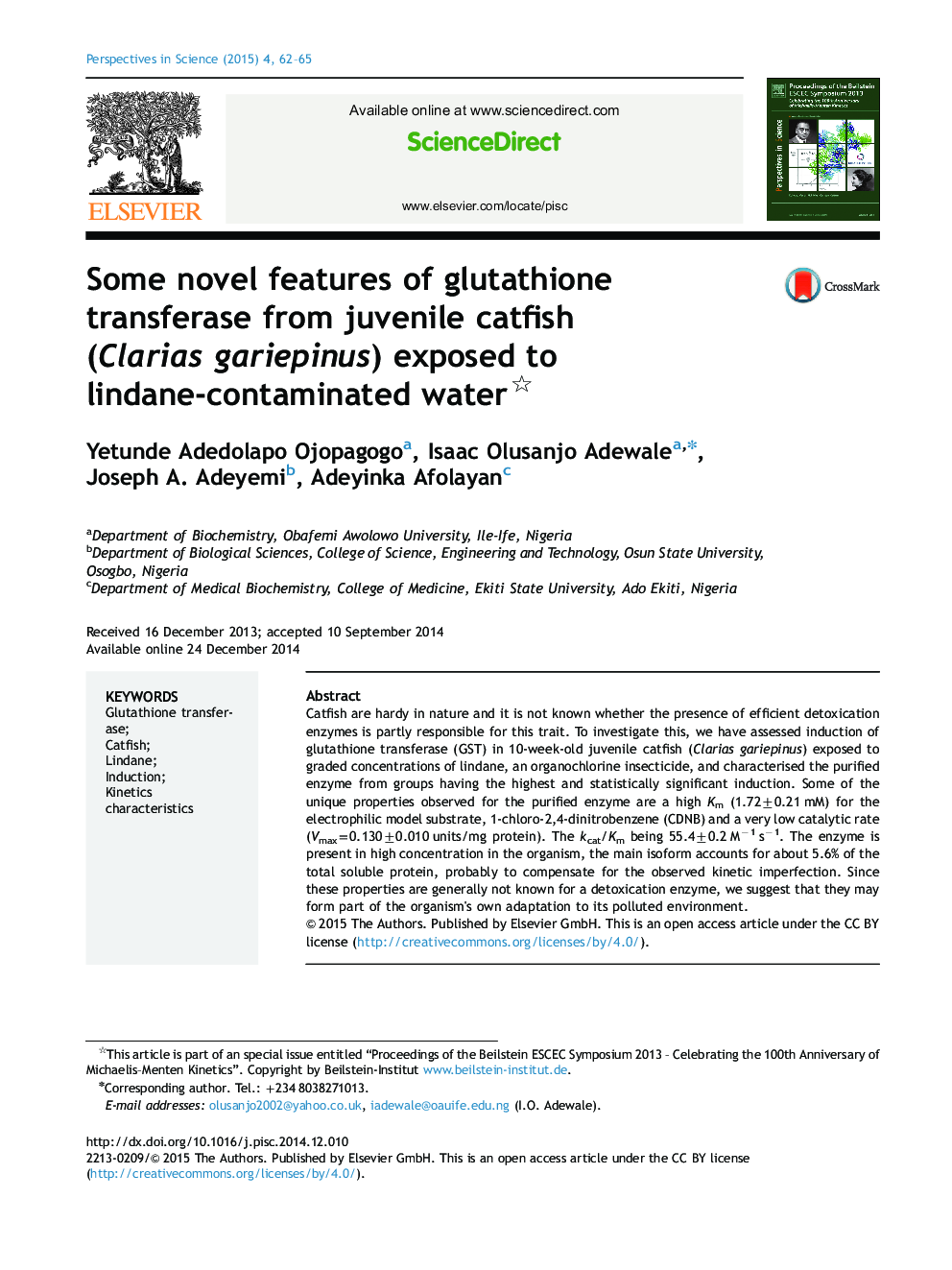| Article ID | Journal | Published Year | Pages | File Type |
|---|---|---|---|---|
| 2061687 | Perspectives in Science | 2015 | 4 Pages |
Catfish are hardy in nature and it is not known whether the presence of efficient detoxication enzymes is partly responsible for this trait. To investigate this, we have assessed induction of glutathione transferase (GST) in 10-week-old juvenile catfish (Clarias gariepinus) exposed to graded concentrations of lindane, an organochlorine insecticide, and characterised the purified enzyme from groups having the highest and statistically significant induction. Some of the unique properties observed for the purified enzyme are a high Km (1.72±0.21 mM) for the electrophilic model substrate, 1-chloro-2,4-dinitrobenzene (CDNB) and a very low catalytic rate (Vmax=0.130±0.010 units/mg protein). The kcat/Km being 55.4±0.2 M−1 s−1. The enzyme is present in high concentration in the organism, the main isoform accounts for about 5.6% of the total soluble protein, probably to compensate for the observed kinetic imperfection. Since these properties are generally not known for a detoxication enzyme, we suggest that they may form part of the organism׳s own adaptation to its polluted environment.
